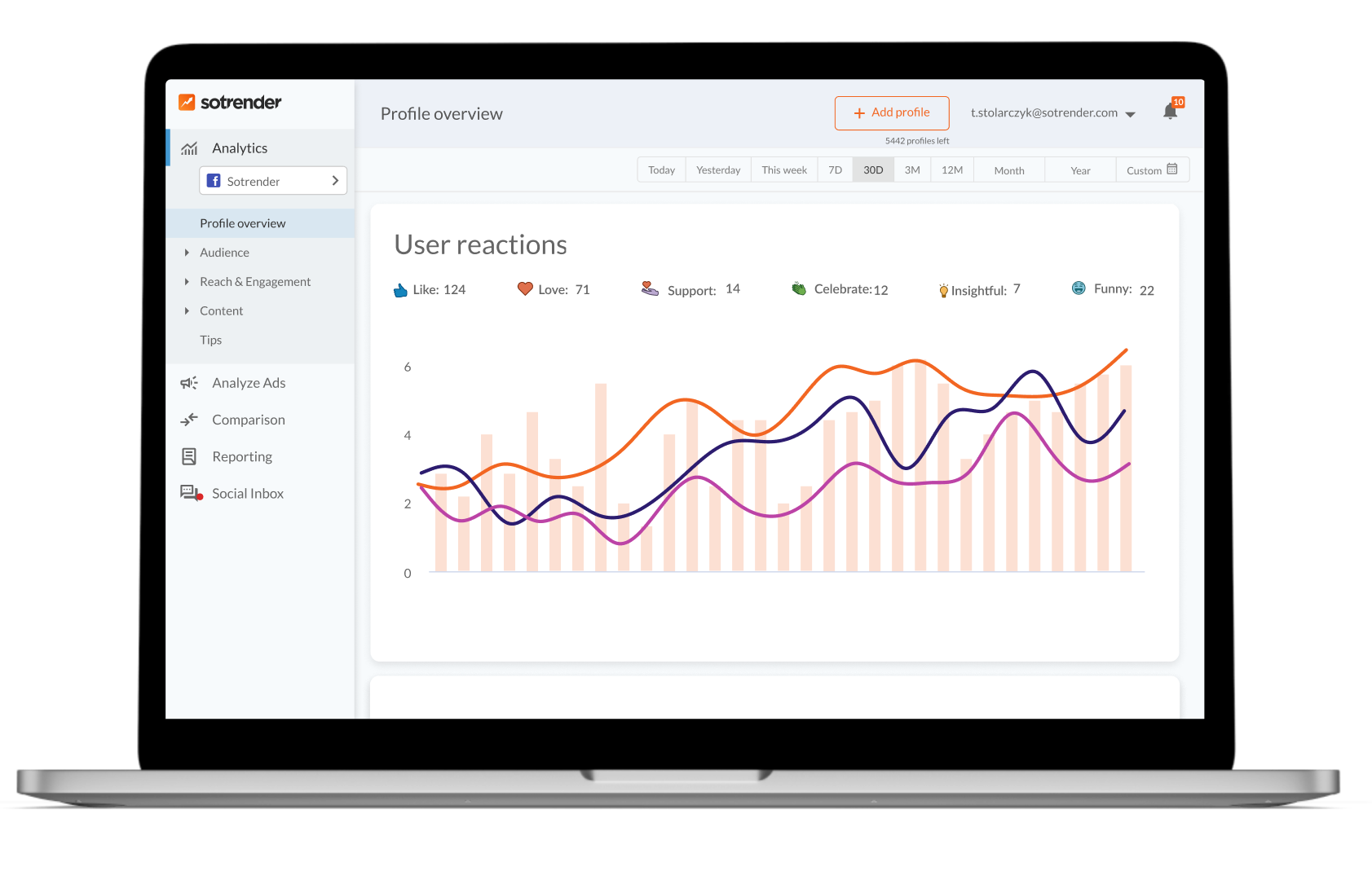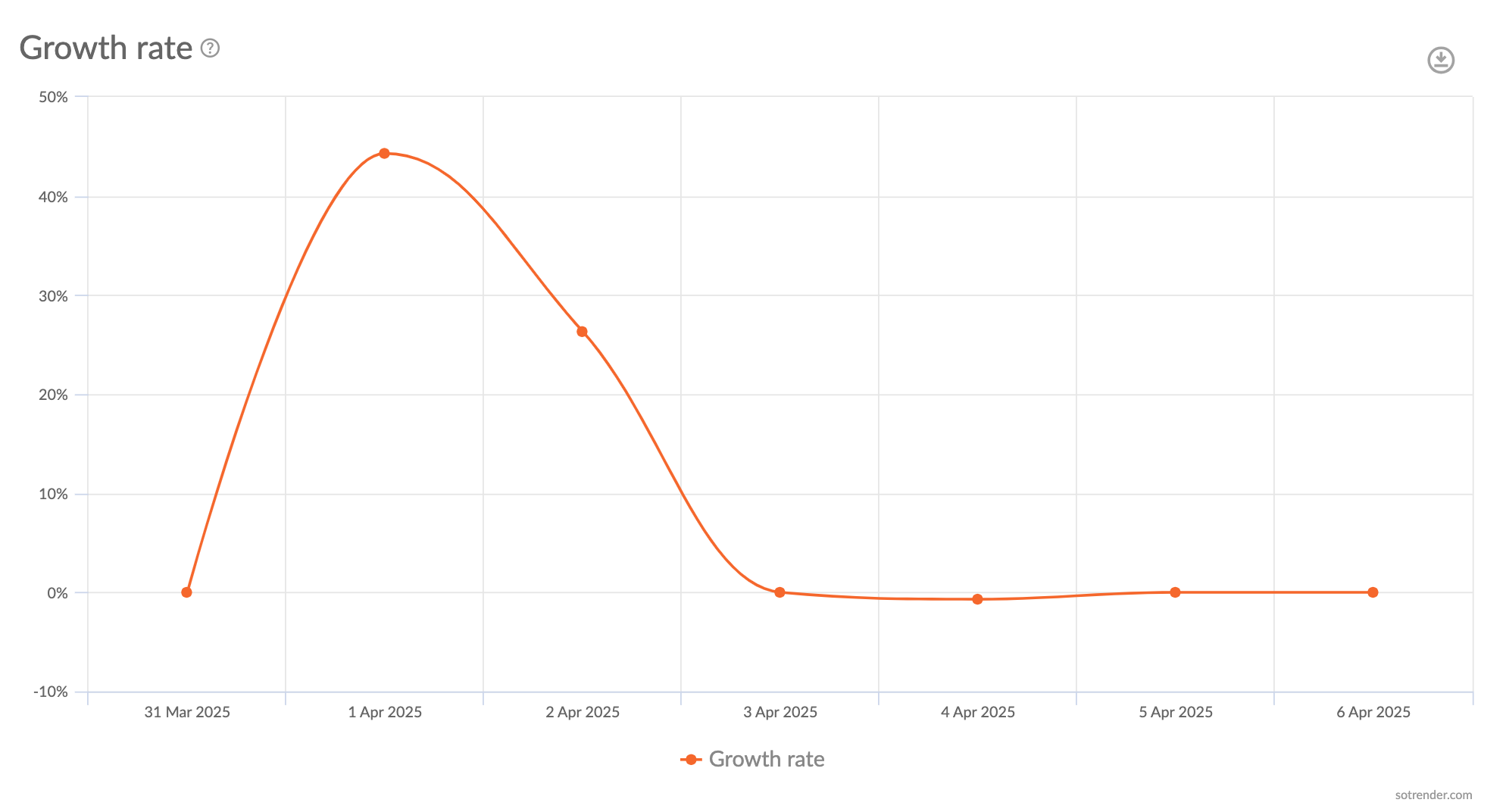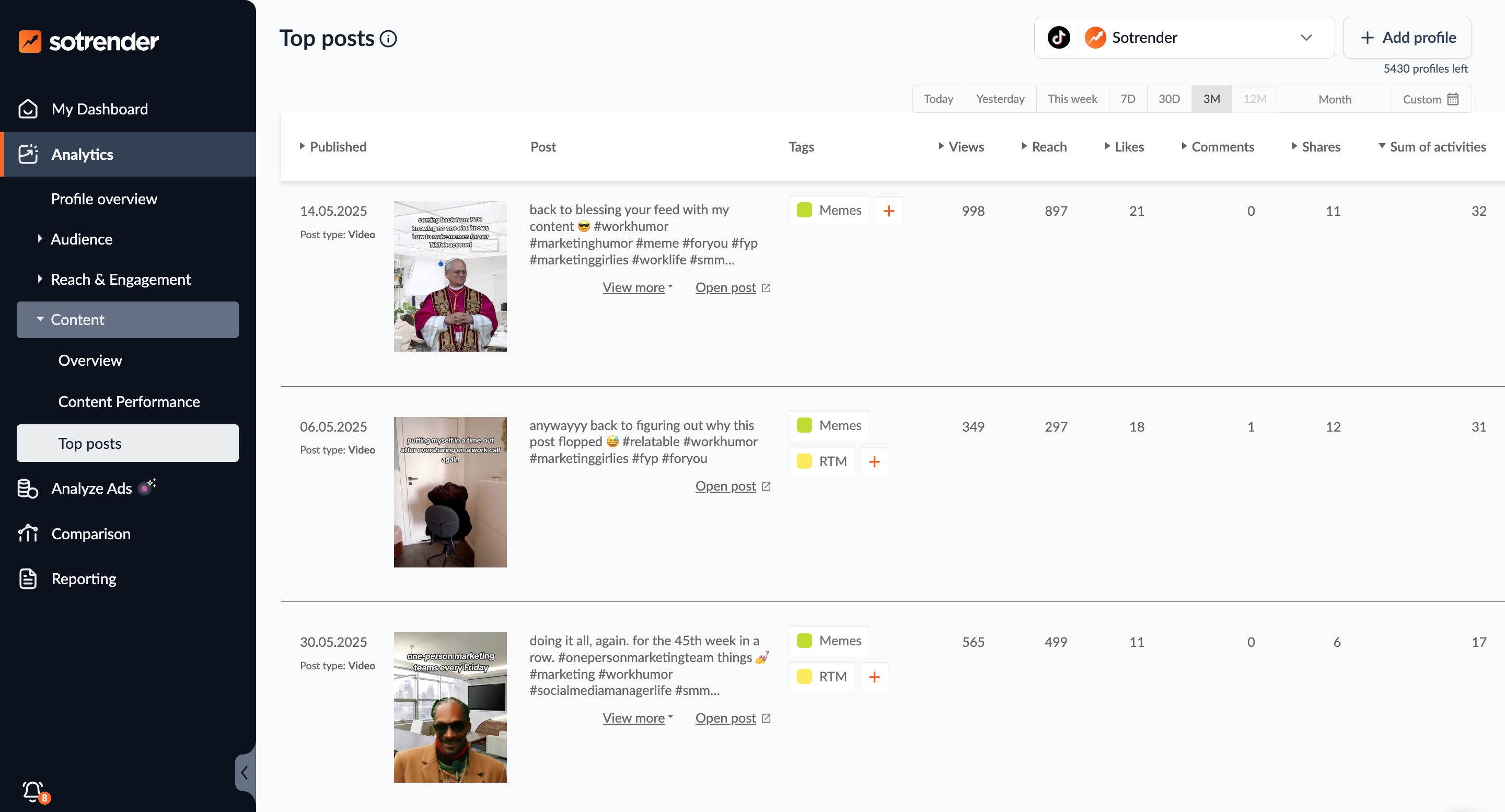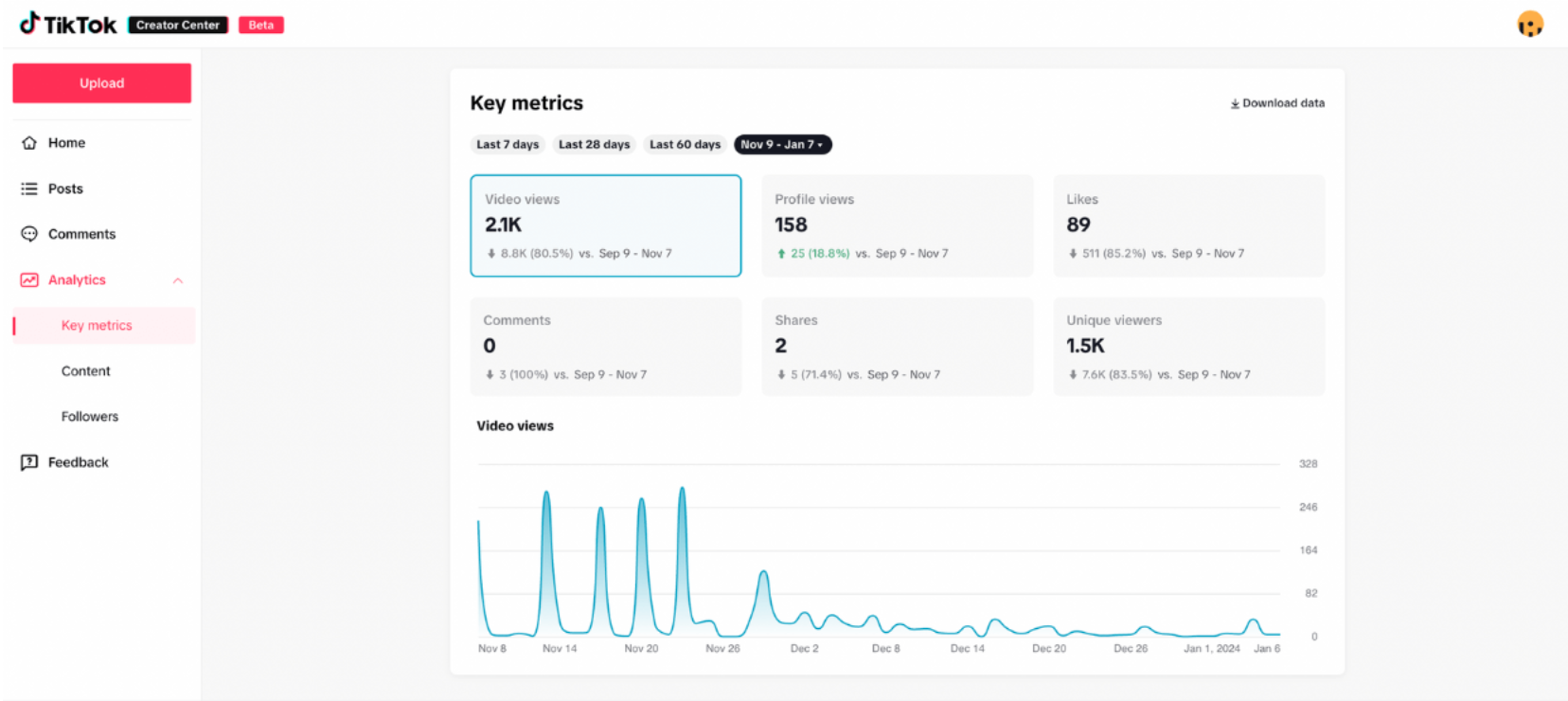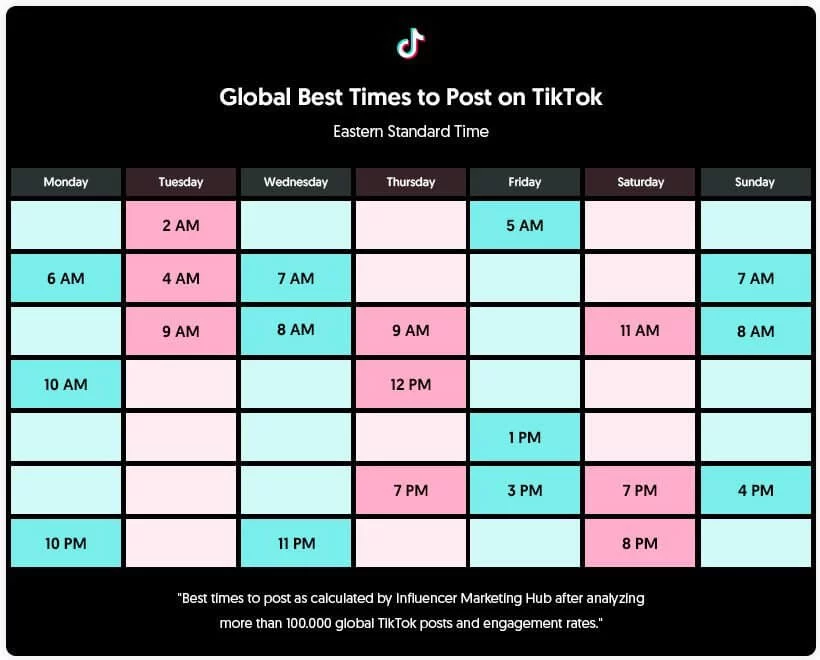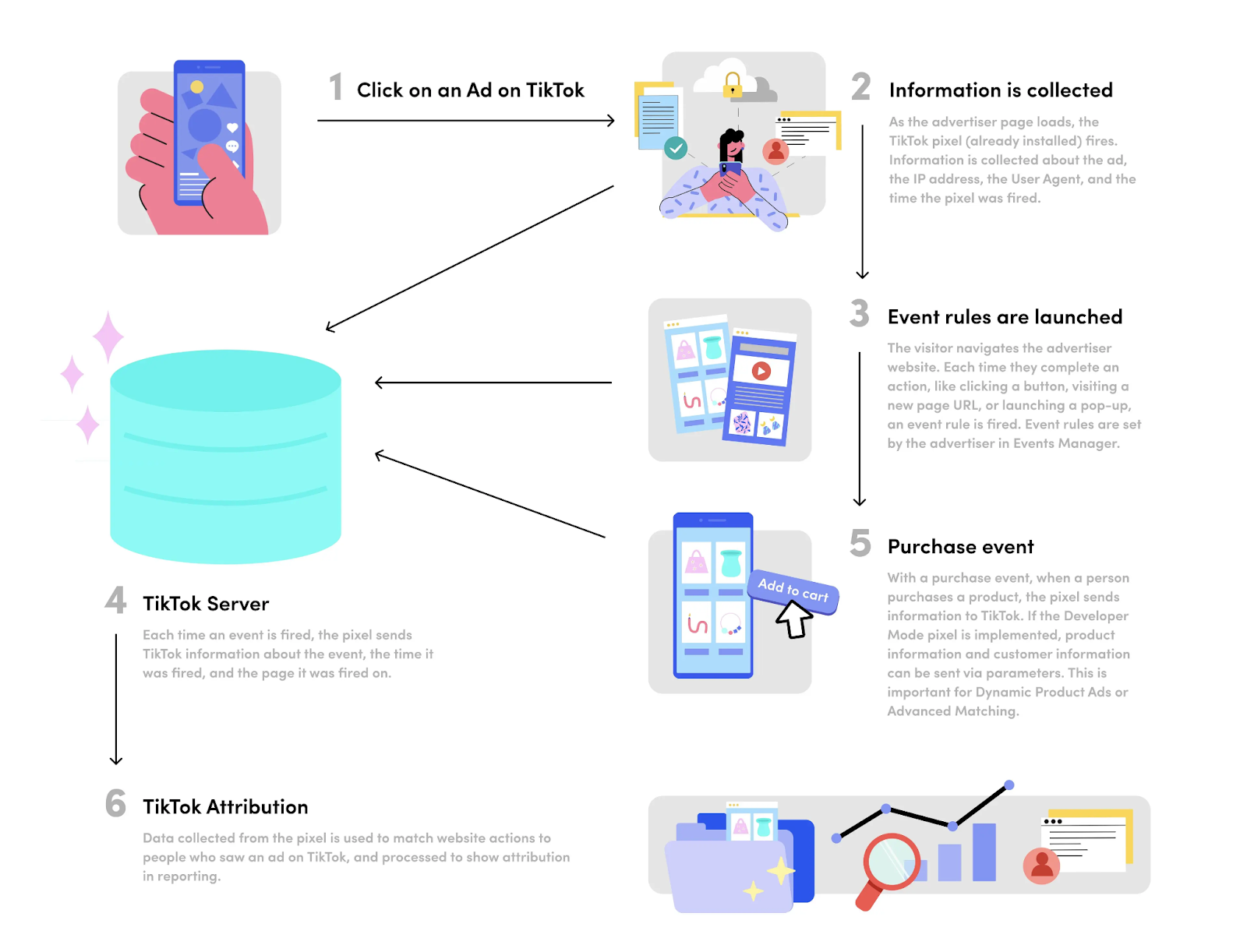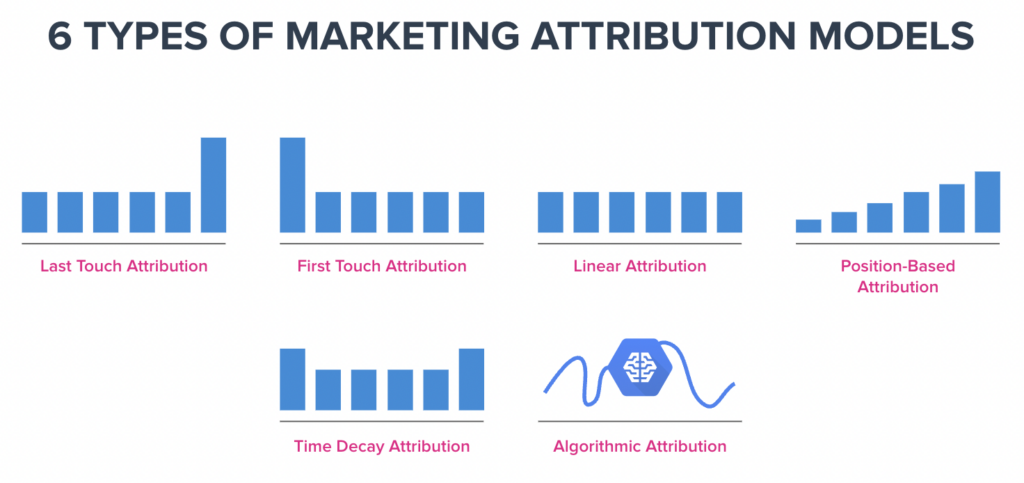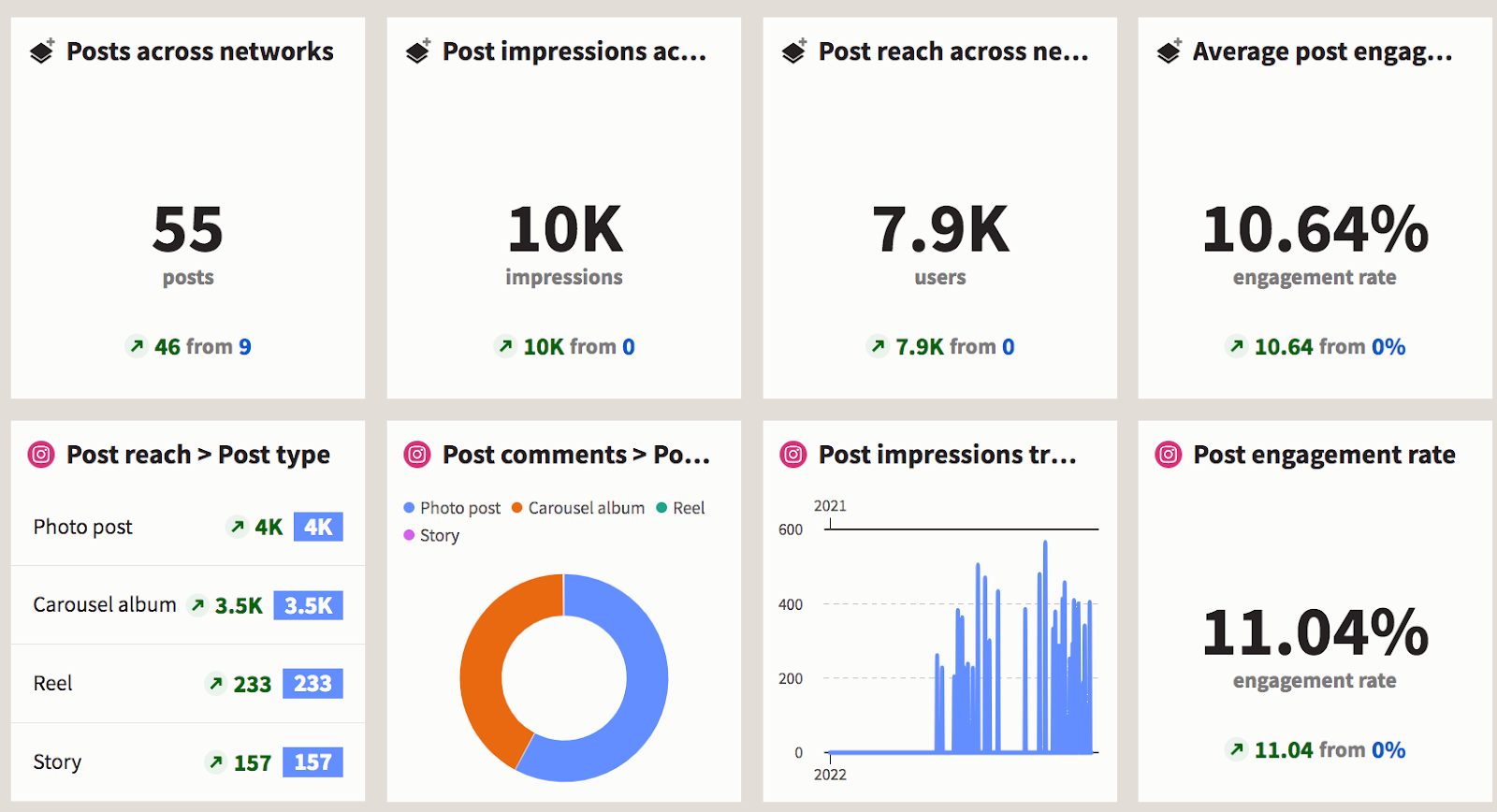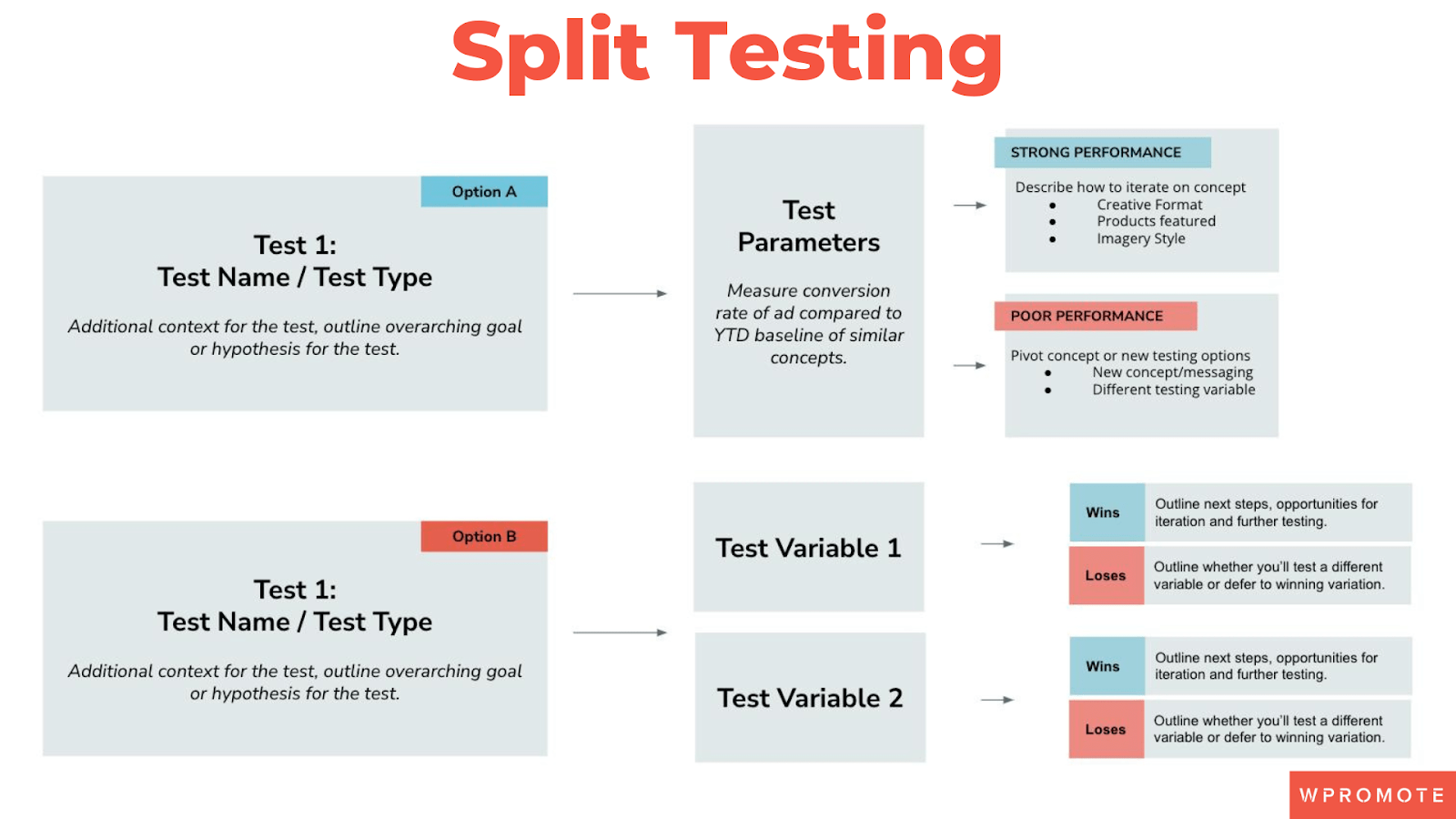TikTok has become one of the most powerful platforms for businesses looking to reach younger, engaged audiences. This social media giant’s rapid growth has changed the digital marketing world, making it essential for brands that want to stay relevant.
But using TikTok effectively isn’t all about creating fun content—it’s about having a strategy. And the key to that strategy is Analytics.
In this article, you will learn why TikTok analytics is crucial for your business and how it can guide your content strategy. You will also explore the important TikTok metrics to track so you can boost your performance on the platform.
Understanding TikTok’s Algorithm
Unlike Instagram or Facebook, TikTok prioritizes content based on its potential to engage users rather than relying on follower count. However, accounts with larger follower bases tend to achieve virality more quickly and provide more comprehensive insights into engagement metrics, such as the time it takes for content to go viral. TikTok’s algorithm looks at different factors to decide which videos appear on a For You Page (FYP). Here are the factors that impact how your content gets shared on TikTok:
- User Engagement: Things like likes, comments, shares, and watch time matter a lot.
- Video Information: Hashtags, captions, and sounds also play a role.
- Device and Account Settings: Language, country, and device type affect the content you see.
Your content’s success depends on how well it connects with what users like and want to see. To get the best engagement, make sure your strategy focuses on these key areas. Understanding these factors is crucial to create successful content that resonates with your audience.
Essential TikTok Metrics for Business
Key TikTok metrics help you understand how well your content is doing and show you areas where your business can improve. Tracking each TikTok metric is essential for analyzing and optimizing your content strategy on the platform. Here are the three categories you should focus on so that you can get a clear picture of what’s working and what needs attention:
1. TikTok Follower Metrics
TikTok follower metrics, such as the follower growth rate, tell you how quickly you’re gaining followers, which shows if your brand is catching individuals’ attention. Analyzing TikTok follower metrics within your TikTok account is essential for monitoring audience growth and engagement trends. That’s why profile views show how often individuals check out your profile after seeing your posts. The number of followers you have can influence metrics like virality timeframe and audience engagement, making it a crucial factor in your social media strategy. Another key thing to look at is how many views turn into followers—tracking new followers is a key metric for understanding audience development. If a lot of viewers decide to follow you after watching your videos, it means your content is really connecting with them. You can create a funnel with a digital business card or linktree and drive your traffic towards a call to action. This will help you have a full process to go from view to customer.
2. Content Performance Metrics
Just like when you share something online, it’s vital to see how far it goes and how many individuals stick around. If viewers watch the entire video, your content is engaging. Video views are a key performance indicator on TikTok, helping you measure how well your content resonates with your audience. Tracking the number of times your video is viewed allows you to evaluate both reach and engagement. The total number of views is a crucial metric for measuring the popularity and reach of your TikTok content. The more interactions you get, the more you can tell your audience is connecting with what you’re sharing.
3. Engagement Breakdown
Lots of individuals interact with your content by liking, commenting, and sharing it, which shows how much they enjoy or connect with what you’re posting. Engagement metrics are essential for measuring user interaction and tracking performance trends on TikTok. The average engagement rate, calculated by dividing the total number of engagements (likes, comments, shares) by the total number of followers and multiplying by 100, is a key indicator for analyzing engagement trends over time. TikTok content metrics provide detailed insights into video performance, allowing you to assess individual video engagement through data on likes, comments, shares, and viewer analysis. Saves and favorites show which content users want to keep for later, revealing long-term appeal.
TikTok-Specific Performance Indicators
While you’re tracking how your content is performing on TikTok, understanding TikTok key metrics can show you where you’re hitting the mark. A study found that 67% of users say they are more likely to buy from a brand after seeing it on TikTok.
For example, influencers like Charli D’Amelio have seen huge success by leveraging TikTok’s reach and viral trends to promote their brands. Here’s a quick breakdown of these TikTok performance indicators that give you a clearer picture:
TikTok Performance Indicators
| Indicator | What It Shows | Example |
|---|---|---|
| FYP Hit Rate | Shows how often your video appears on the For You Page | Your video using a viral dance challenge sound gets featured on FYP, gaining a huge audience. |
| Sound Usage Statistics | Measures how often your video uses a popular or trending sound | A funny video using a trending sound catches on and gains views. |
| Trending Hashtags | Tracks the performance of hashtags tied to current trends | Using #Viral or #TikTokMadeMeBuyIt helps your content gain traction. |
| Stitch and Duet Analytics | Shows engagement with your content through stitches or duets | Someone stitches your funny reaction video, giving it a whole new audience. |
Each metric provides valuable insights into your content performance, virality, and overall account growth. Percentage-based metrics, such as CTR and video view rates, help you measure campaign effectiveness and user engagement. Additionally, monitoring and participating in trending topics is crucial for increasing your content’s visibility and engagement on TikTok.
Competitor Analysis on TikTok
If you are going to track your competitors, you can see what works and use that insight to improve your content. For example, if your competitor gets more engagement, check the approach to see if something similar can be adapted. Comparing your performance to competitors helps you set realistic goals.
Analyzing metrics over a selected date range can provide insights into performance trends and help you adjust your strategy accordingly.
To understand your performance and find areas to improve, check these metrics:
- Engagement rate
- Views
- Watch time
Aside from that, analyzing competitors also reveals opportunities. You might spot trends or topics that individuals or viewers have missed, giving you a chance to create unique content that stands out.
Tools for TikTok Analytics
When it comes to analyzing your TikTok performance, here are the few important tools that you can use to get the insights you need:
TikTok’s native app allows users to access key metrics and manage ad campaigns directly from their mobile devices.
1. TikTok’s Native Analytics Dashboard
Since TikTok has its own built-in analytics tool, you can easily track how your content is doing. All you need is a Pro account, and you’ll get insights into your:
- Profile
- Videos
- Followers
- Engagement
You can also access view analytics to analyze metrics such as views, engagement, and virality patterns for individual videos.
In fact, 83% of TikTok users say they discover new content through the platform’s For You page, making understanding your analytics key to reach a wider audience. TikTok’s native analytics dashboard is easy to use and gives you all the data you need to start analyzing your content and improving your strategy. Additionally, TikTok Ads Manager provides comprehensive tools for managing and analyzing your ad campaigns.
2. Pro Account Benefits
Upgrading to a Pro account gives you access to more detailed analytics. You’ll get extra insights like audience growth, how your videos are doing, and trends over time. You’ll also see detailed follower activity, including when your followers are most active and how they engage with your content. This helps you see what kind of content works best, so you can tweak your strategy and create more of what your audience loves.
3. TikTok Ads Manager and Third-Party Analytics Tools for Deeper Insights
If you’re looking for detailed data, Sotrender has just launched its TikTok analytics feature, offering valuable metrics to understand your TikTok performance, track audience behaviors, and fine-tune your strategy. Also, its user-friendly interface makes it easy to track growth and adapt to trends, helping you stay ahead of the curve. These analytics tools enable you to optimize your content performance, campaign strategies, and overall advertising results on TikTok by analyzing key metrics and adjusting tactics to boost engagement, reach, conversions, and return on investment.
4. Data Export and Analysis Options
Businesses can export TikTok data to tools like Excel or Google Sheets for deeper analysis. This way, it makes it easier for you to see how your TikTok analytics are growing and what’s needed to work, giving you control over your strategy.
Interpreting Your Analytics Data
Keep in mind that interpreting your analytics data is all about finding patterns and using that information to make smarter decisions for your content. Here’s how you can make sense of the numbers: Review the overview section of TikTok analytics to get a comprehensive summary of your account health and performance over specific time frames.
1. Identifying Patterns in Successful Content
Check which posts get the most likes, shares, and comments. Identifying and analyzing your top performing content helps you understand what resonates with your audience and allows you to refine your content strategy for better results. Notice any common themes or styles in the ones that perform well. For instance, do videos get more attention than photos? Does the audience prefer how-to guides or behind-the-scenes content? Spotting these patterns creates what works best. For example, tracking the average number of days until virality can help set realistic expectations for your content’s performance.
2. Understanding Audience Behavior Signals
Focus on how your audience interacts with your content. You will notice if engagement is higher at certain times of the day or on days of the week. For example, comments boost when you ask questions or share personal stories. These help figure out what resonates and when your audience is active.
3. Content Timing and Frequency Insights
Your data can tell you when your audience is most active. If you notice your views are higher at certain times or days, try posting around those times. Reviewing analytics from the past seven days can help you identify your top-performing posts and optimize your content strategy. Also, pay attention to how often you’re posting. Posting too much might overwhelm your audience, but posting too little could make you forgettable.
4. Correlating Metrics to Business Objectives
Analytics help you see how your content aligns with business goals. For example, if you’re aiming to boost brand awareness, check how reach and engagement are growing.
However, if sales are your focus, you need to look at how content is driving the conversions. This way, you can measure how your efforts are paying off.
Actionable Strategies Based on Analytics
To improve your content strategy, use analytics to guide your decisions. Here’s how you can turn those insights into actionable strategies:
1. Creating Content Based on Metrics Insights
Take a look at your metrics to figure out which topics and types of content are getting the most attention. If your audience enjoys tips or behind-the-scenes posts, focus more on that niche.
In addition to that, use what you learn to create content that speaks to your audience’s needs and interests. This way, you’ll be making content that’s not only fun but also relevant.
2. Optimizing Posting Schedule
Like any smart strategy, you want to post when your audience is most active. Check your analytics to see when people are online and engaging. Whether it’s mid-morning or late afternoon, make sure you’re posting during those peak times. The key is consistency, so find a schedule that works and stick to it.
3. Leveraging High-Performing Content Formats
Some formats, like videos or infographics, can get more engagement than others. For example, videos can boost engagement by up to 120%. If you notice a certain format is working well, use it often. Try different variations to keep it interesting, but stay with what’s proven to connect with your audience.
4. Audience Targeting Refinements
Dig into your audience data to see who’s engaging with your content. This helps you focus your efforts on reaching the right audience. You can break it down by things like age or interests. The more you fine-tune your audience, the better your content will reach those who’ll actually care about it.
Measuring ROI from TikTok
When measuring Return of investment (ROI) from TikTok, you need to focus on a few key areas to understand if your efforts are paying off. Here’s a complete guide:
1. Tracking Conversions from TikTok
Always start by setting up conversion tracking to see what your users do after engaging with your TikTok content. This could be anything like clicking a link or signing up for your newsletter.
Also, Tiktok has a tool called the TikTok Pixel that helps you track these actions and link them to your campaigns. With this, you can see exactly how your TikTok efforts are turning into real results.
2. Attribution Models for TikTok Marketing
Using attribution models help you understand the customer journey and assign credit to touchpoints that lead to conversions. Understanding which model works best for your goals can help you better assess TikTok’s effectiveness. For TikTok, common models include:
- First-click attribution: Credit is given to the first TikTok ad or content a user interacts with.
- Last-click attribution: The last TikTok touchpoint before a conversion gets all the credit.
- Linear attribution: Each TikTok interaction gets equal credit, whether ad or post.
- Position-based attribution: Credit is split between the first and last touchpoints.
- Time-decay attribution: More recent touchpoints, like TikTok ads, get more credit.
- Algorithmic attribution: Uses data-driven models to assign credit based on user behavior.
3. Calculating Cost-Per-Acquisition (CPA)
To figure out how much you’re spending to get a customer or lead from TikTok, just calculate your Calculating Cost-Per-Acquisition (CPA). Here’s how:
CPA = Total Campaign Spend ÷ Number of Conversions
Understanding the average amount spent per conversion helps in budgeting and optimizing your ad spend.
Let’s break it down with an example:
Campaign Performance Metrics
| Campaign Spend | Conversions (New Customers) | CPA (Cost-Per-Acquisition) |
|---|---|---|
| $500 | 50 | $10 |
So, if you spent $500 on a TikTok campaign and got 50 new customers, your CPA would be $10. This helps you understand if your TikTok ads are bringing in good value for the money you spent.
4. Long-Term Value Metrics
While short-term results like conversions matter, don’t overlook long-term value. Customer Lifetime Value (CLV) shows how much revenue a customer brings over their relationship with your brand.
If TikTok is attracting repeat buyers, your marketing is on track. Also, keep an eye on brand awareness and customer retention, if TikTok helps you build loyalty, it’s a great tool for long-term growth.
Common Analytics Pitfalls and How to Avoid Them
As you are diving into analytics, it’s easy to make some common mistakes. Here’s how to avoid them:
1. Focusing on Vanity Metrics
Being excited about big numbers like likes or followers is totally normal, but those numbers don’t always tell the full story. What matters are things like engagement rate and customer retention. In fact, brands that focus on engagement see 2x higher conversion rates than those who just chase vanity metrics.
2. Misinterpreting Short-Term Trends
Short-term spikes in traffic or engagement can feel great, but they don’t always show the bigger picture. Instead of getting excited by temporary changes, focus on finding steady trends over time. This way, avoid overreacting and build a more solid, long-term strategy.
3. Neglecting Audience Demographics
If you don’t know who the audience is, it’s easy to miss out on opportunities. Understanding details like age, location, interests, and behavior helps create content that truly connects. Additionally, use these insights to guide your strategy, not just rely on numbers.
4. Failing to Test and Iterate
Analytics can point you in the right direction, but split testing is the key. You won’t know what works best unless you try different types of content, strategies, and formats. Track of what’s working and make changes as needed. As a result, you’ll keep improving and stay in tune with what your audience wants.
5. Overlooking Security
When using TikTok for business, it’s crucial to be aware of cybersecurity implications. TikTok has the capability to track your location, which raises privacy concerns for both businesses and their audience. Organizations should exercise caution with the app’s permissions and consider implementing security protocols to protect sensitive business information when using the platform for marketing purposes.
Stay Ahead with TikTok Smart Analytics
Understanding TikTok analytics helps grow your business on the platform. By focusing on the right metrics and making decisions based on data, you can build a solid strategy that boosts engagement and growth. Keep testing and adjusting your approach as you learn more from the insights you get. Focusing on the most important TikTok metrics ensures that your strategy is data-driven and effective.
Now, it’s time to put these analytics strategies and tools to work so your business can make the most of TikTok. Stay on top of new trends and tools to keep your strategy fresh in this fast-moving digital world.

